
ANTONIE VAN LEEUWENHOEK INTERNATIONAL JOURNAL OF GENERAL AND MOLECULAR MICROBIOLOGY
Scope & Guideline
Fostering Collaborative Discoveries in Microbial Science
Introduction
Aims and Scopes
- Microbial Taxonomy and Systematics:
The journal emphasizes the classification and description of new microbial species, including bacteria, archaea, and fungi. It employs polyphasic approaches, integrating genomic, morphological, and biochemical data to establish taxonomic relationships. - Environmental Microbiology:
Research on microbial communities in diverse environments, such as marine, freshwater, soil, and extreme conditions, is a core focus. The journal highlights studies that explore the ecological roles of microbes and their interactions with other organisms. - Biotechnological Applications:
The journal also covers the application of microorganisms in biotechnology, including bioremediation, agriculture, and pharmaceuticals. Studies on microbial metabolites, enzymes, and their potential uses in various industries are frequently published. - Pathogen Characterization:
There is a significant interest in the characterization of microbial pathogens, including their virulence factors, antibiotic resistance, and implications for public health and agriculture. This includes both clinical isolates and environmental strains. - Functional Genomics and Metagenomics:
The journal supports research that utilizes genomic and metagenomic techniques to understand microbial functions, diversity, and adaptations, thereby contributing to a deeper understanding of microbial ecology.
Trending and Emerging
- Microbial Ecology and Community Dynamics:
There is an increasing emphasis on understanding microbial communities and their interactions within ecosystems. Research focusing on metagenomics and ecological assessments of microbial diversity is becoming more prevalent. - Novel Biotechnological Applications:
Emerging applications of microbes in biotechnology, such as bioplastics production, bioremediation, and sustainable agriculture, are gaining traction as the journal publishes more studies highlighting these innovative uses. - Extremophiles and Adaptations:
Research on extremophiles—microbes that thrive in extreme conditions—has become more prominent, reflecting a growing interest in their unique adaptations and potential applications in biotechnology and industry. - Antimicrobial Resistance and Pathogen Genomics:
The characterization of antimicrobial resistance in pathogens, particularly in clinical and environmental contexts, is trending. Studies utilizing genomic approaches to understand resistance mechanisms are increasingly featured. - Synthetic Biology and Engineering of Microbes:
There is a rising trend towards synthetic biology, where researchers are engineering microbes for specific functions, including metabolic engineering for biofuel production and bioremediation.
Declining or Waning
- Traditional Microbial Physiology:
There has been a noticeable decrease in articles focusing solely on classical microbial physiology without a genomic or ecological context, indicating a shift towards more integrative approaches in microbiological research. - Plant-Microbe Interactions:
Although still published, studies specifically focusing on plant-microbe interactions have become less frequent, possibly as the focus shifts to broader ecological and genomic studies. - Antibiotic Discovery from Soil Microbes:
Research centered solely on the discovery of novel antibiotics from soil bacteria has diminished, reflecting a broader trend towards understanding microbial roles in ecosystems rather than just their pharmaceutical potential. - Single-Species Studies:
The journal's recent publications indicate a waning interest in studies that focus exclusively on the properties of single microbial species without considering their ecological interactions or community dynamics.
Similar Journals

Microbial Physiology
Unveiling the Secrets of Microbial FunctionalityMicrobial Physiology is a premier, peer-reviewed journal published by KARGER, dedicated to advancing the field of microbiology through innovative research and reviews. With an ISSN of 2673-1665 and an E-ISSN of 2673-1673, the journal stands out in the academic landscape having established a strong track record since its inception in 2020, converging its scope until 2024. It proudly holds a Q2 category ranking in several key areas including Applied Microbiology and Biotechnology, Biochemistry, and Microbiology, making it an essential resource for researchers and professionals in these disciplines. The journal provides open access options to ensure that cutting-edge findings are widely disseminated, fostering collaboration and knowledge sharing. As a vital contributor to the ongoing discourse in microbial physiology, the journal serves as a platform for novel discoveries and methodologies that can significantly impact health, industry, and environmental sustainability. Located in Basel, Switzerland, it brings together a global community of scholars eager to further explore the complexities of microbial life.

mSphere
Empowering breakthroughs in the world of microorganisms.mSphere is a leading open-access journal published by the American Society for Microbiology, dedicated to the dynamic fields of Microbiology and Molecular Biology. Since its inception in 2016, mSphere has rapidly established itself as a reputable source of scholarly research, achieving notable impact factors and excellence within the academic community. The journal ranks in the top quartile (Q1) amongst its peers in Microbiology, and Q2 in the field of Molecular Biology, demonstrating its significance and relevance through Scopus rankings—specifically, it holds the #42 spot out of 182 in the Microbiology category and #108 out of 410 in Molecular Biology. With an editorial commitment to advancing the understanding of microbial and molecular sciences, mSphere provides an accessible platform for researchers, professionals, and students alike to disseminate groundbreaking findings. The journal promotes rigorous peer-review and invites innovative contributions aimed at enhancing microbial research mobility and molecular exploration. Accessible openly since 2016, mSphere continues to thrive as an influential publication driving scientific dialogue and discovery in the microbiological sciences.

ARCHIVES OF MICROBIOLOGY
Unveiling the Secrets of Microbial LifeThe Archives of Microbiology, published by Springer, is a reputable journal in the field of microbiology, serving as a vital platform for the dissemination of groundbreaking research and critical reviews since its inception in 1974. With an ISSN of 0302-8933 and an E-ISSN of 1432-072X, this journal operates out of Germany and maintains a global reach, promoting high-quality scholarship across multiple disciplines, including biochemistry, genetics, and molecular biology, as evidenced by its Q2 ranking in Medicine (miscellaneous) and consistent Q3 placements in other categories in 2023. Although the journal does not offer open access options, its rigorous peer-review process ensures that published articles are of the highest standard, making it an essential resource for researchers, professionals, and students keen on advancing their understanding of microbial sciences. As the journal converges toward 2024, it remains committed to fostering innovative microbiological research and facilitating interdisciplinary dialogue within the scientific community.
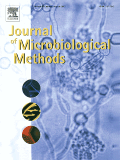
JOURNAL OF MICROBIOLOGICAL METHODS
Advancing methodologies for a healthier tomorrow.JOURNAL OF MICROBIOLOGICAL METHODS, published by Elsevier, is a pivotal platform in the realm of microbiology, covering essential methodologies and innovations from both medical and molecular perspectives. With an ISSN of 0167-7012 and an E-ISSN of 1872-8359, this journal has been a significant contributor to the field since its inception in 1983, with a continued commitment to advancing research through 2024 and beyond. Although classified in the lower quartile (Q3) for both microbiology and molecular biology disciplines, it ranks at #74 in medical microbiology and exhibits a respectable position amidst its peers, marking it as a valuable resource for scholars and practitioners. Researchers, professionals, and students alike will find a wealth of insights and practical methodologies that are vital for contemporary microbiological studies. The journal's emphasis on rigorous peer reviews ensures that the content is both high-quality and relevant, catering to a diverse audience keen on the latest advancements in microbiological practices.
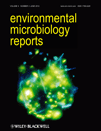
Environmental Microbiology Reports
Unveiling the Hidden Roles of Microorganisms in EcosystemsEnvironmental Microbiology Reports, published by WILEY, is a prestigious journal dedicated to the field of environmental microbiology, exploring the intricate interactions between microorganisms and their environments. With an ISSN of 1758-2229, this journal has established itself as a crucial resource for researchers, professionals, and students interested in the latest advancements and applications in microbial ecology, soil science, and environmental sustainability. Since its inception in 2009, the journal has grown in impact and reputation, proudly ranked in the Q1 category for both Agricultural and Biological Sciences and Ecology, Evolution, Behavior and Systematics as of 2023. Notably, it occupies the 17th position out of 193 in its subcategory based on Scopus rankings, showcasing its significance within the field. Although it does not currently offer open access options, the high-quality research published in this journal continues to contribute significantly to the understanding of microbial roles in environmental processes, emphasizing the vital role of microbes in maintaining ecosystem health and promoting sustainable practices.

JOURNAL OF BASIC MICROBIOLOGY
Elevating Knowledge in Microbial ResearchJOURNAL OF BASIC MICROBIOLOGY is a premier publication in the field of microbiology, published by WILEY since 1985. With a significant presence in Germany, this journal encompasses a wide spectrum of research topics, focusing on applied microbiology and biotechnology as well as diverse areas within medicine. Holding a commendable Q2 ranking in both its categories for 2023, it plays a crucial role in disseminating innovative findings and methodologies to the community. Researchers will find it to be an essential platform for sharing high-quality work, where it currently stands at rank #47 in the applied microbiology and biotechnology category, representing the 63rd percentile among international journals. The JOURNAL OF BASIC MICROBIOLOGY caters to a growing audience of professionals and students, offering insights essential for advancement in microbiological research and its applications. While it does not currently offer an Open Access option, it remains an influential outlet for academic excellence, continuously contributing to the development of the field through its rigorous peer-reviewed articles.
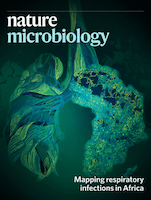
Nature Microbiology
Exploring Innovations in Applied MicrobiologyNature Microbiology is a premier journal published by NATURE PORTFOLIO that has firmly established itself within the realms of microbiological research since its inception in 2016. Based in the United Kingdom, this prestigious journal specializes in the intricacies of applied microbiology, cell biology, genetics, immunology, and medical microbiology, making it a cornerstone for academics and professionals alike. With an impressive Scopus ranking placing it in the top tier across various relevant categories—such as rank #3 in Genetics and #2 in Applied Microbiology—it underscores the journal’s commitment to high-quality, impactful research. Although it operates under a subscription model, Nature Microbiology's broad Open Access policy facilitates greater dissemination and visibility for its authors. The journal's objectives are centered around publishing cutting-edge advancements that enhance our understanding of microbial life, its interactions, and applications in health and disease. As a Q1 journal across multiple disciplines, it holds immense significance for researchers, professionals, and students enthusiastic about the latest innovations and breakthroughs in microbiology.
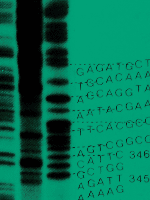
Microbial Genomics
Unlocking the Secrets of Microbial GenomesMicrobial Genomics, an esteemed journal published by the Microbiology Society, is a leading platform dedicated to the rapidly evolving field of microbial genomics. Since its transition to Open Access in 2016, this journal has consistently aimed to promote unprecedented transparency and accessibility in scientific research. Based in the United Kingdom, Microbial Genomics serves a diverse international audience, providing an invaluable resource for researchers, professionals, and students interested in genomics, microbiology, and related fields. With impressive quartile rankings in 2023, including Q1 status in Epidemiology, Genetics, and Microbiology, alongside strong performance in other categories, the journal is positioned at the forefront of academic discourse and innovation. This journal's commitment to excellence is not only reflected in its rigorous peer-review process but also in its dedication to showcasing groundbreaking research that informs current practices and shapes future trends in microbial science. As researchers explore the intricacies of microbial genomes, Microbial Genomics remains an essential resource fostering knowledge and collaboration in the scientific community.
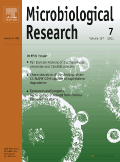
MICROBIOLOGICAL RESEARCH
Driving Excellence in Microbiological DiscoveriesMICROBIOLOGICAL RESEARCH, published by Elsevier GmbH, serves as a leading platform for advancements in the field of Microbiology, holding an impressive Q1 ranking in its category as of 2023. With an ISSN of 0944-5013 and E-ISSN 1618-0623, this journal has been instrumental in disseminating high-quality research since its inception in 1994 and continues to contribute significantly to the academic landscape through 2024. Positioned within the top 13% of publications in the Immunology and Microbiology category, ranked #24 out of 182 according to Scopus, it attracts the attention of researchers, professionals, and students alike. While the journal is not open access, it offers vital insights and peer-reviewed articles that drive innovation and exploration within microbiological research. Its rigorous selection process underscores the importance of quality and relevance in advancing knowledge in this dynamic field.
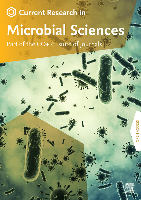
Current Research in Microbial Sciences
Connecting Researchers with Cutting-edge Microbial DiscoveriesCurrent Research in Microbial Sciences is a distinguished peer-reviewed journal published by Elsevier, focusing on the dynamic and rapidly advancing fields of microbiology and infectious diseases. With an ISSN of 2666-5174, this journal has established itself as an essential resource for researchers, professionals, and students alike, offering the latest findings and insights from 2020 to 2024. The journal holds a significant position in the academic landscape, achieving a Q2 ranking across multiple categories, including Immunology and Microbiology, Infectious Diseases, and Medical Microbiology, demonstrating its impact in these critical areas of study. With impressive Scopus rankings—such as being placed in the 94th percentile for Immunology and Microbiology—current research is well-supported by a thriving scientific community. Although the journal is not open access, it serves as a vital platform for disseminating high-quality research and fostering collaboration within the microbial sciences. Engaging with this journal enables professionals and researchers to stay abreast of innovations and contribute to the collective body of knowledge that shapes our understanding of microbial interactions and infectious diseases.